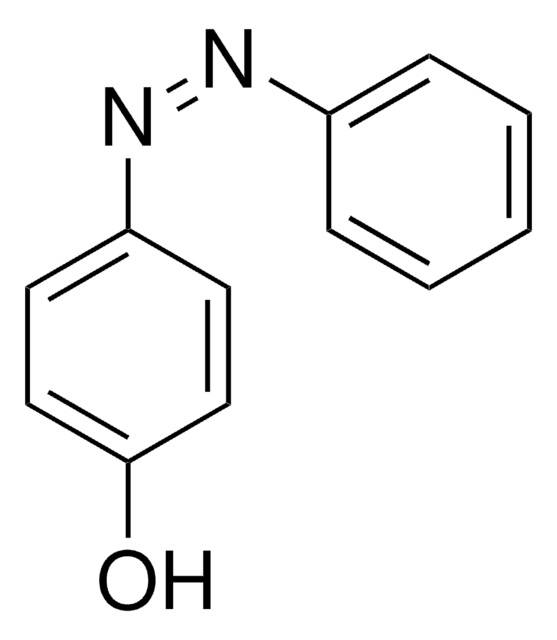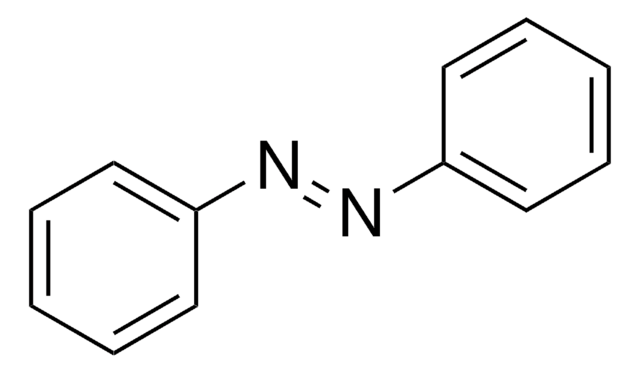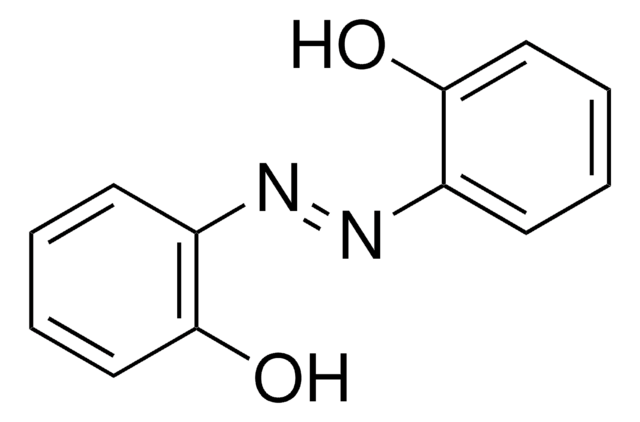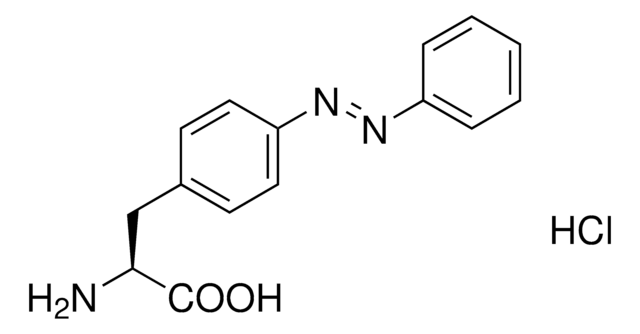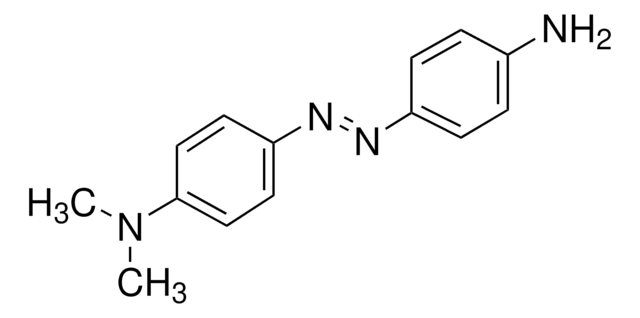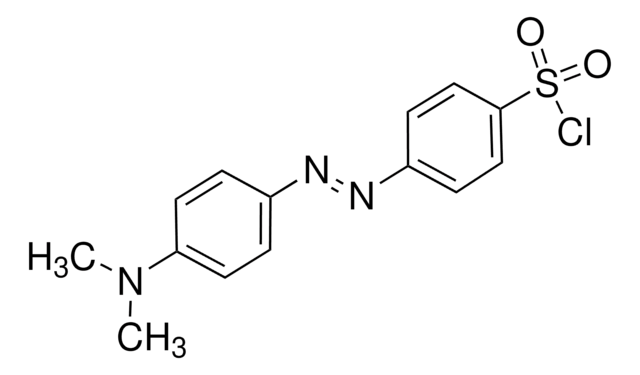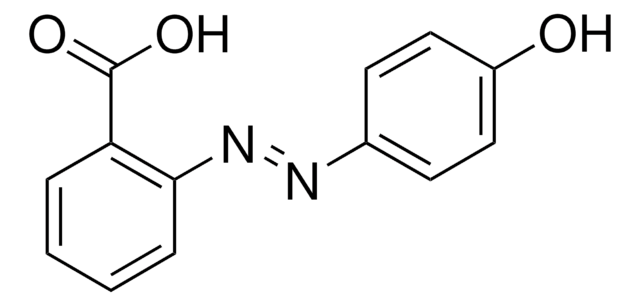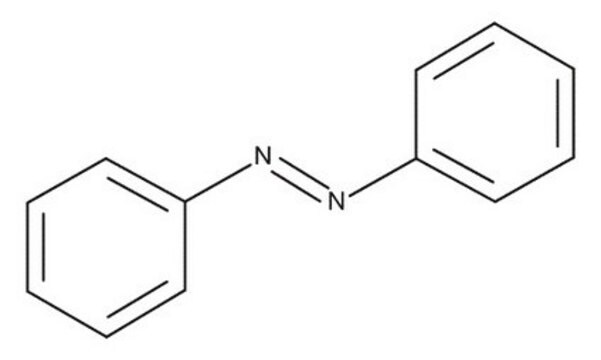Wichtige Dokumente
479624
4-(Phenylazo)benzoesäure
98%
Synonym(e):
4-(2-Phenyldiazenyl)benzoic acid, 4-Carboxyazobenzene, Azobenzene-4-carboxylic acid, Azoic acid, p-Phenylazobenzoic acid
About This Item
Empfohlene Produkte
Qualitätsniveau
Assay
98%
mp (Schmelzpunkt)
247-250 °C (lit.)
Funktionelle Gruppe
carboxylic acid
SMILES String
OC(=O)c1ccc(cc1)\N=N\c2ccccc2
InChI
1S/C13H10N2O2/c16-13(17)10-6-8-12(9-7-10)15-14-11-4-2-1-3-5-11/h1-9H,(H,16,17)/b15-14+
InChIKey
CSPTZWQFHBVOLO-CCEZHUSRSA-N
Verwandte Kategorien
Allgemeine Beschreibung
Anwendung
Signalwort
Warning
H-Sätze
Gefahreneinstufungen
Eye Irrit. 2 - Skin Irrit. 2 - STOT SE 3
Zielorgane
Respiratory system
Lagerklassenschlüssel
11 - Combustible Solids
WGK
WGK 3
Flammpunkt (°F)
Not applicable
Flammpunkt (°C)
Not applicable
Hier finden Sie alle aktuellen Versionen:
Besitzen Sie dieses Produkt bereits?
In der Dokumentenbibliothek finden Sie die Dokumentation zu den Produkten, die Sie kürzlich erworben haben.
Kunden haben sich ebenfalls angesehen
Global Trade Item Number
| SKU | GTIN |
|---|---|
| 479624-1G | 4061825766249 |
Unser Team von Wissenschaftlern verfügt über Erfahrung in allen Forschungsbereichen einschließlich Life Science, Materialwissenschaften, chemischer Synthese, Chromatographie, Analytik und vielen mehr..
Setzen Sie sich mit dem technischen Dienst in Verbindung.
![4-[4-(Dimethylamino)phenylazo]benzoesäure-N-succinimidylester ≥98.0% (HPLC)](/deepweb/assets/sigmaaldrich/product/structures/120/235/500b5276-3ce2-43b7-9588-3883f13d4ff7/640/500b5276-3ce2-43b7-9588-3883f13d4ff7.png)

